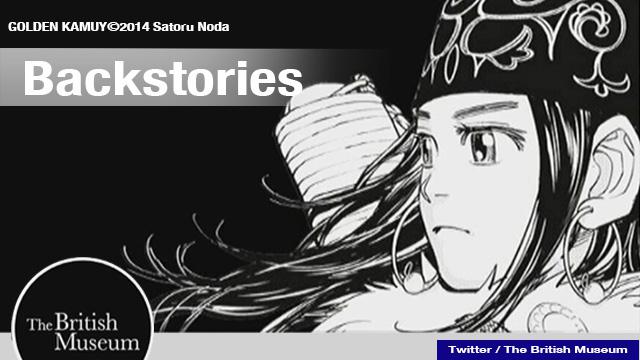A manga spotlights the Ainu
One of the world's biggest manga exhibitions will be held at the British Museum in May 2019. The museum chose an Ainu character from the comic "Golden Kamuy" by Satoru Noda to appear on its advertisement for the event. The Ainu are an indigenous people who have been living mainly in the northern island of Hokkaido. The character was selected from hundreds of masterpieces by those from Hokusai Katsushika to Osamu Tezuka.
The manga "Golden Kamuy" was awarded Japan’s Manga Taisho, one of the top manga awards, in 2016. The Ainu word "Kamuy" can literally be translated into God. The Ainu people regard numerous things in nature as "Kamuy," for instance, they call bears "Kim-un-Kamuy." The story tells of a former Japanese soldier seeking gold that's said to be hidden in Hokkaido. The Ainu girl plays a key role in finding it.
Characters speak the Ainu language quite often, and Ainu rituals and hunting style are introduced. The Ainu girl is living in the local Ainu village and understands both Ainu and Japanese. The story takes place after 1905 in the latter part of the Meiji Era. Experts say there were many Ainu who spoke the Ainu language as their first language at the time.
But now, it is said that there are less than 10 people who can speak the Ainu language fluently, and the culture is diminishing gradually. This is mainly because of the assimilation policy implemented in the Meiji era, in which Ainu people were forced to be educated in Japanese and were banned from their traditional way of hunting. UNESCO says the Ainu language is "critically endangered" and that some dialects from Sakhalin and Kuril are extinct.
"Why can’t I learn about my own culture?"
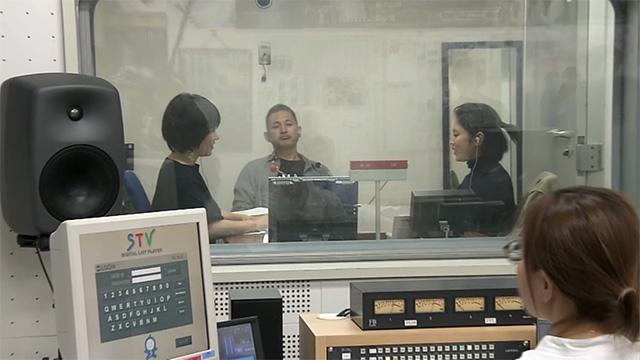
"Irankarapte!"
The word means "hello" in Ainu. Maya Sekine, a student of Keio University, has been a radio personality for a weekly radio show on the Ainu language since last April.
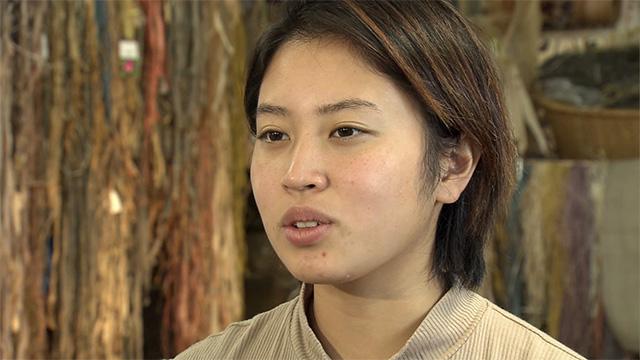
Maya, ethnically Ainu, comes from the Nibutani district of Biratori Town in Hokkaido, one of few areas where the Ainu culture is still alive. Maya grew up surrounded by the Ainu culture, but it was not enough to help her learn the language. In Japan, there are few opportunities to learn the language, and not enough people who can teach it. "Why isn't it possible for me to do something as natural as learn about my own culture?" she thought. She studied the language on her own and began appearing on the radio in an effort to spread knowledge about it.
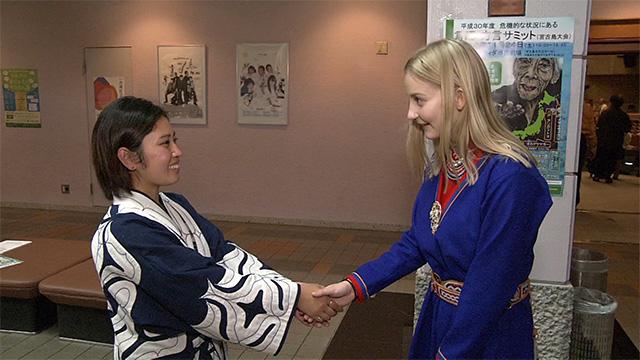
Last November, Maya had an inspirational encounter. She attended a national symposium on endangered languages, where she met Sara Kappfjell, a young woman from Norway who is one of the northern European indigenous Sami people.
Sara spoke about the Norwegian indigenous policy, in which people can learn the Sami language and culture at school. Maya was surprised at how different it is to Japan, where some people don’t even know about the existence of the Ainu people.
Visibility of Sami in society
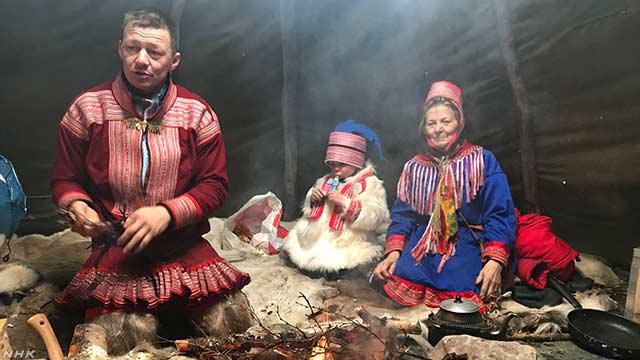
Norway's advanced indigenous policy is known across the world. But it has a bittersweet history. The Sami is originally a reindeer-herding nomadic group which had faced fierce discrimination until the 1980s. They were banned from their traditional form of singing, "joik," and from speaking their own language. Change came in the late 80s after an elected parliament ("Samediggi" in Sami) consisting exclusively of Sami people was established in 1989. Since then, the opinions of the Sami people were reflected in national policy.
In 1994, the Sami culture was in the spotlight on a global scale. A Sami singer performed a joik at the opening ceremony of the Lillehammer Olympic Games. The performance impressed the world. This event opened people’s eyes to the Sami and their situation. Ms. Aili Keskitalo, the president of the Sami Parliament, said, "Norway was portrayed as a monocultural and monolingual society until then. But that wasn’t true. The Olympic and Paralympic Games were a great place to show people our culture." In 1997, the King of Norway apologized to the Sami for the country's past assimilation policy.
Language as a basis of culture
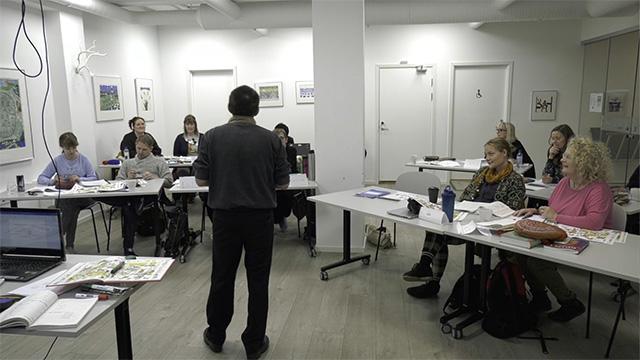
Norway is now trying to make the Sami language more widespread. The government set up Sami schools nationwide to teach the language and traditional handicrafts like the sewing of costumes called "Gakti" (in Northern Sami) as well as the cooking of reindeer meat. Non-Sami people can enter the schools as well. Public language classes are also held across the country. "All Sami policies in Norway are based on the earlier history, i.e. the Norwegianization policies and the discrimination that happened before. The Sami culture and people make the society more diverse," says Ms. Anne Karin Olli, the state secretary of the Ministry of Local Government and Modernisation.
Younger generation "proud of being Sami"
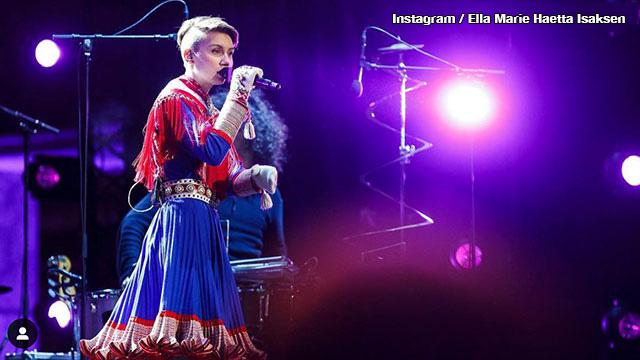
The younger generation is becoming prouder of their heritage. This became apparent last October. In "Battle of Stars," a music program on Norwegian public broadcaster NRK, a 20-year-old Sami girl became the center of attention. The program is the Norwegian version of "American Idol," in which singers compete for the title of best singer. The Sami girl, Ella Marie Haetta Isaksen, sang a joik at the quarterfinals. She wore a traditional costume and captivated the audience with her expressive, clear voice. She went on to win the championship.
"Young Sami people are becoming prouder of being Sami. The Sami culture is becoming more and more visible in society," said Ms. Olli -- also a Sami -- crying tears of joy.
New era and the Ainu
Norway used the Olympic Games as an opportunity to transform its policy on indigenous people. Similarly, Maya hopes Japanese society will change through the Tokyo 2020 Games and said, "I am not an Ainu activist and do not have much power, but I want people to know there are still Ainu people living among us today."
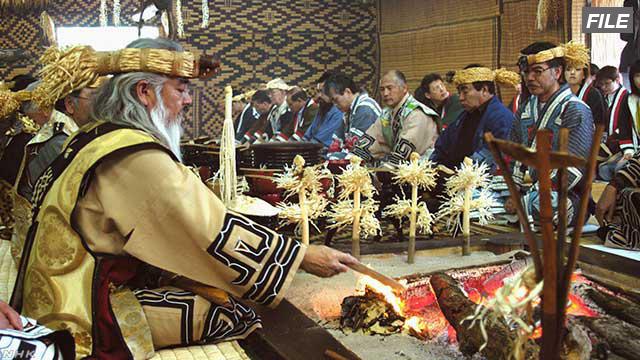
Japan is preparing to welcome a new era, with Emperor Akihito planning to abdicate at the end of April. The Ainu culture and language have diminished over the past two eras, Showa and Heisei, as a result of the Meiji era policy. With the Olympics approaching, the question now is whether people will help the Ainu preserve and develop their culture again in the long run.
